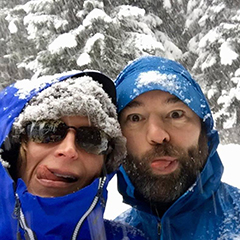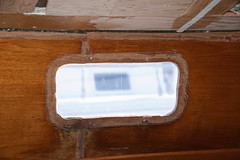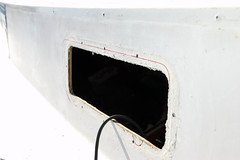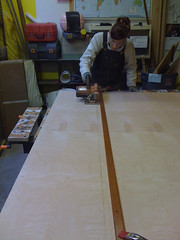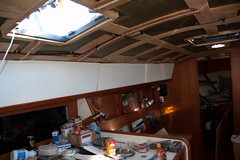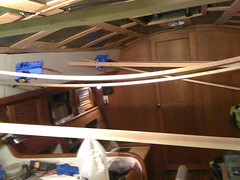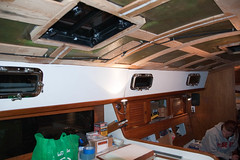Destinations - San Juan Islands, Insurance, Navigation, sv Deep Playa
Slug: and-we-fell-off-the-proverbial-horse
Status: published
This post was written by Dawn, edited by Patrick
Everyone has heard it before…if you have ever purchased something that
moves fast or could potentially be dangerous. You always receive the
standard advice from just about everyone, “Just be prepared when
[insert bad thing] happens, because it’s not a matter of if it
will happen but when it will happen. I’ve heard the warning as
kid, while I worked at a horse farm where I rode and cared for horses.
“It’s not a matter of if you fall off, it’s more when you
fall off.” And I did, multiple times, and yes, I always got up, dusted
myself off and got back on that proverbial horse. And I also heard it
after purchasing my first motorcycle at the age of 21 and yes, I dropped
my motorcycle, a couple times, and yes, I got back on. And, both
Patrick and I have heard it since purchasing Deep Playa, “It’s not a
matter of if you’ll run aground, it’s when you’ll run
aground.” And so here is our story of running aground in Deep Playa for
the first time.
After we peeled off the raft up at the Lats N’ Atts party in Poulsbo a
few of us continued our wonderful sailing trip and headed north towards
the San Juan Islands for another week.
Our first stop was in Mystery Bay State Park,
according to the website, is a “10-acre marine park is reachable by car or boat.
The park features 685 feet of saltwater shoreline on Mystery Bay and offers a
spectacular view of the Olympic Mountains.” It sounded wonderful and
peaceful especially after the debauchery of the weekend. Since we were
the first boat to leave Poulsbo we arrived at the mouth of Mystery Bay a
few hours prior to the other boats in our raft up. The entrance to the
bay winds through a narrow and shallow channel and then opens up to the
bay. We decided to motor all the way down to the bottom of the bay and
drop anchor and wait for the others to arrive. Absolutely no problems!
After having some very “mysterious” things happen to the other boats,
such as batteries not charging and transmissions getting stuck in
reverse. We confirmed that our fuel tank gauge wasn’t functioning
either. Luckily, before we ran out! We decided to wake up early and
head over to Port Townsend, WA to fill up the fuel tank and to top off
our water tanks. After pulling up the anchor we headed out of the bay
and thought it would be a great idea to leave on an ebb in hopes that as
the tides shifted to a flood that it would push us quickly over the
Straits of Juan de Fuca.
Something that we learned early on after purchasing Deep Playa was there
are a few poor design decisions made by the previous owners. One of
which, is the depth gauge is mounted on an interior bulk head. The
helmsman must bend over and remove his/her sunglasses and look 6 feet
through the companion way to read the digital display.
We were feeling comfortable (maybe too much) about our perfect
navigation of the channel the previous evening, so I hopped down below
and started making some food and getting ready for our trip. Bad idea!
All of a sudden I felt a jerk. I knew that wasn’t right and by the time
I ran over to the companionway to see what happened, we had hit a
sandbar and we were stuck! YIKES! After a few choice words, we both
hopped into action, mentally and physically preparing ourselves and the
boat for whatever may come. We hailed our friends to attempt to pull us
off of the sandbar but they weren’t powerful enough and they too were
concerned about running aground. So we hailed Vessel Assist and they
were there in 20 minutes! The captain showed up and told us that he
needed another boat because his wasn’t powerful enough. So we waited
for another boat. As we waited, the wind started to pick up (blowing us
into the sandbar of course) and the rain started. Perfect!!!! Patrick
and I felt uncomfortable of the heeling that was increasing due to the
tide moving further and further out but the captain from Vessel Assist
assured us that that was nothin’! We felt a little better due to his
presence and his reassurance. He told us that we should check the sea
strainer since we were running the engine in shallow water. We did, and
it had some seaweed in it but it wasn’t too bad. While we waited he
said that the plan was to have the second boat tie to the main halyard
while he pulled us off using a bridal off the bow cleats. The heel from
the second boat would lift the keel free and he would pull us into
deeper water.
Twenty minutes later the second boat showed up and they prepped to pull
us off. Our biggest concern was potentially damaging the mast head and
the bow pulpit. As things got underway we just sat back and held on for
the ride. As she was being pulled off and we were heeling over to the
point that the lifelines and portlights were in the water I began to get
nervous and in response to that anxiety, I began to chant, “She’s a good
boat…she’s a good boat…she’s a good boat.” Patrick looked over at me
and said “What the heck are you saying?” I responded, “I know she’s a
good boat! So why not chant it!” Our new tagline for Deep Playa: “She’s
a good boat!” After several attempts she finally popped out of the mud
and we were once again in deep water!
After this, we sprang into action, checking all of the systems and
starting the engine before the Vessel Assist guys left us. I ran down
below and opened up the door to the head and whoosh! Water flowing down
the hull and onto the floor! I ran over to the bilge and checked, not
too much water, we’re OK! I ran back into the head and tore everything
from the storage areas to investigate the leak. The clamp fitting for
the hose connecting the sea cock and the drain from on deck was spewing
water everywhere. It had become over loaded by the copious amounts of
water coming from above deck. (Just add that to the list to fix)
Luckily we didn’t take on too much water and things settled down very
quickly. However, I did lose a hair dryer to the sea that day. :-(
(RIP) After we cleaned everything up and checked her over, everything
seemed to be OK! (I told you she was a good boat) We grabbed a mooring
ball so we could decompress and talk about what happened and what we
could have done better.
After decompressing for a bit we decided to take advantage the weather
window that was upon us and headed off to Port Townsend to get a slip
for the night. We wanted to haul her out and check the keel, rudder and
prop before heading across the Straits and to the San Juans the next
morning.
The guys at Port Townsend Boat Haven
were great! They took us in early the next morning and we hung in the sling
while we checked out her hull. And like, I have said before, she’s a good boat
(this is a recurring theme). No damage to the rudder or prop and minimal damage
to the bottom paint. Thank goodness for her modified full keel! We planned
on hauling her out anyway this year to do the bottom paint so we were
happy campers to say the least. To make our experience even better, the
guys at the yard informed us that they were having 50% off all haulouts
that day! Seriously???!! Sweet! We told him, well, for that price,
let’s do it all over again!
After we splashed, we headed to the fuel dock and filled her up and we
were off to Westcott Bay on San Juan Island to meet up with our raftup!
Things we learned from this experience:
- Deep Playa: can be translated to “deep beach” in Spanish; the irony
is not lost on us
- Move the bulkhead mounted depth gauge to a visible location
- Don’t get cocky and too comfortable even if you have been successful
at doing [insert verb] in the past.
- Patrick and I make a great team and work well together under
pressure. We didn’t yell at each other nor place blame for mistakes. We
both had our responsibilities to take care of and we trusted each other
to handle them efficiently and effectively. (It’s always nice to
reaffirm this belief)
- All sailors will respond to this story in the most positive and
comforting way: “See, it was a great learning experience for you two!”
